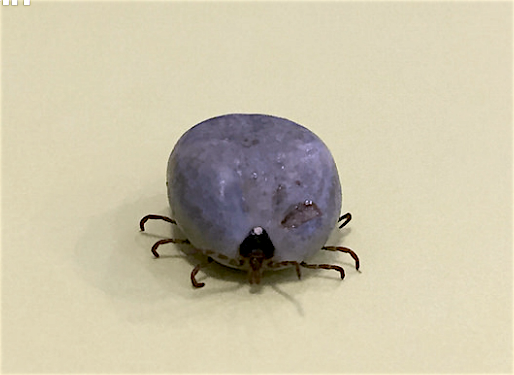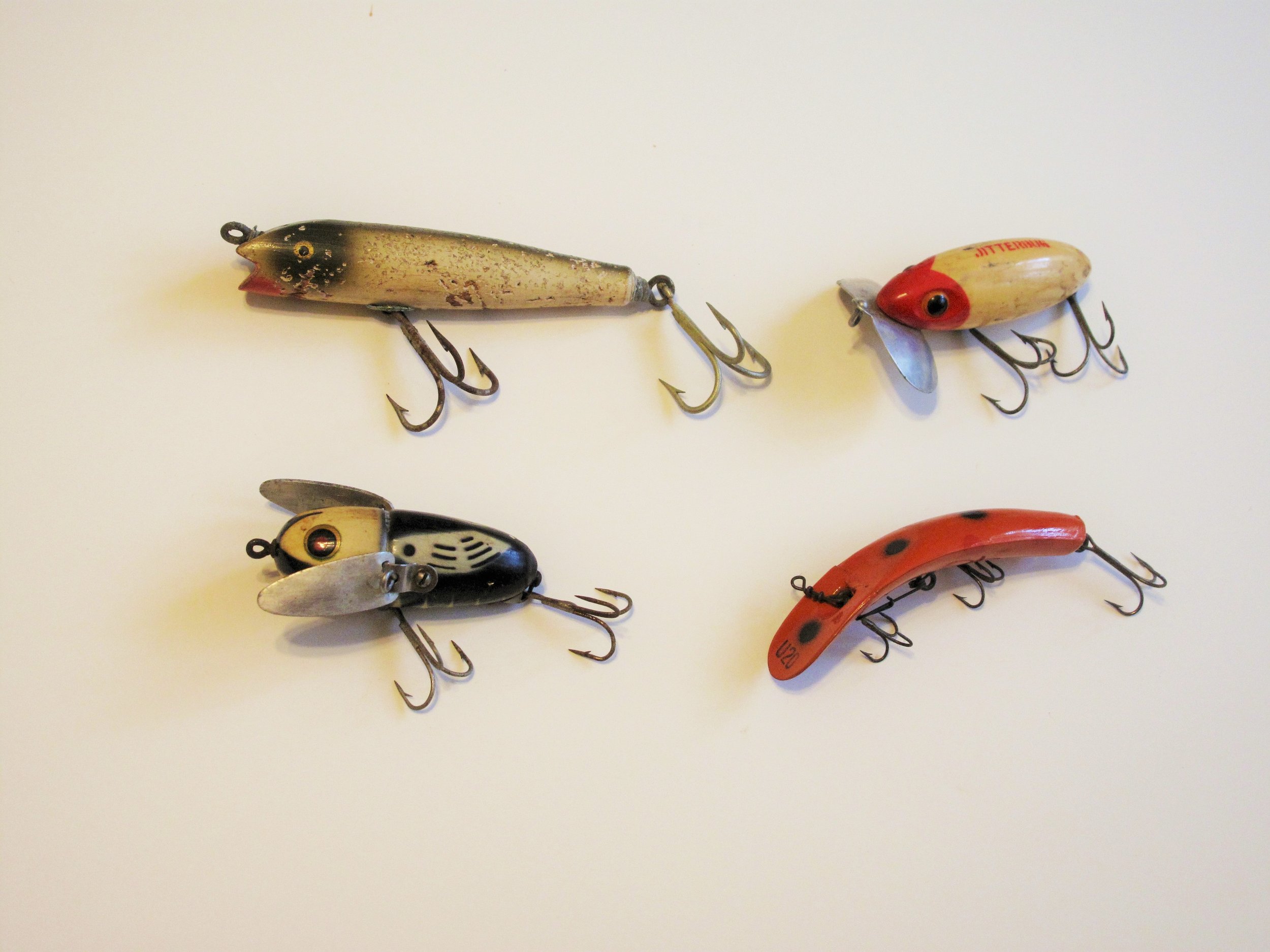Tick Attack: How To Fight Back and Win
The fear of tick attack is so widespread that someone once made a horror movie with that title. Poking fun at our tick phobia makes sense. Some people are so afraid of these tiny arachnids that they won’t step off pavement. That’s silly because its fear out of ignorance, not reality.
Here's the good news: ticks don’t actually hurt you. The bad news is the pathogens they transmit while sucking your blood can debilitate or kill you. Yeah, pretty bad.
Image shows an adult tick on a blade of grass questing by reaching front legs out in hopes of grabbint a passing animal for a classic Tick attack.
But there's more good news. Ticks don’t drop on you from trees like their spider cousins sometimes do. They don't leap at you like fleas. And they don't bury their heads in your hide. You can easily prevent any tick attack with the right clothing (or none), a squirt of permethrin, and a bit of social grooming. Let’s clear up some more of these frightening old tick myths and see how easy it is to enjoy the outdoors without falling victim to these creepy crawlers.
Tick Attack Is Germ Warfare
Some 80 species of ticks call North America home. All suck blood in order to grow and reproduce, but not all carry diseases. Different studies have shown 1 in 20, 1 in 70 and even as few as 1 in 1,000 sampled ticks were disease carriers. So just because you suffer a tick attachment doesn't mean you'll get a horrible disease.
The 16 diseases ticks do carry include some that will kill you. The others make you wish they’d killed you. Lyme disease, Rocky Mountain Spotted Fever, Powassan... And now there's this red meat allergy syndrome some ticks are passing along. It makes you allergic to steaks, roasts, and venison burgers. For some of us carnivores that’s a fate worse than death. Speaking of venison, our deer may be a big reason there are so many ticks. All mammals and many birds host ticks, but deer are the perfect transport for carrying them far and wide. The more deer in your area, the more ticks, most likely.
The Real Tick Attack
So you have good reasons to avoid tick bites, and that's easy because... ticks don’t bite. Dogs, bears and 'gators bite. Ticks merely probe and suck. Painlessly. Here’s how a real world tick attack works. The vampire tick hangs out on the end of a grass blade, twig, leaf, or weed with its front legs opened and “questing” for a ride. If you brush past, those tiny front legs grab you and the hitchhiker starts climbing. Ticks almost always climb up. When they find tender skin without pressure (they need space to swell like a tick) they settle in and begin drilling for oil — red oil.
Now forget about that head burying business. Ticks attack by slowly probing under your skin cells with tiny, nearly microscopic mouth parts. The can't gnaw a hole big enough to stick their whole head in. Sometimes they and your skin swell so that it appears the head is embedded, but it's really just those minuscule mouth parts that are in you. Some ticks have sedatives in their “saliva,” but even without that, their drilling implements are so tiny that they almost always score a free meal without you feeling a thing — until your hand brushes against that weird lump on your nape. Aaaaiiii! A tick!
Okay, don’t panic. Okay, stop panicking. You aren’t about to die. Even though ticks are ugly, creepy, blood sucking vampires, it takes them 12 to 24 hours before they can inject you with any of the bad pathogens. And, prior to that, it usually takes them an hour to 12 hours to even start drilling. In other words, you have time to beat them before the tick attack succeeds. So keep your cool and do things right.
Avoid the Tick Attack
First, before you even discover a tick attack has been launched on your sacred personage, fend them off. Tiny larval ticks, called “seed ticks” by most outdoorsmen, live in leaf litter. Sit against a tree in turkey season or shuffle through the leaves hunting morels and you could encounter a swarm of them. I say swarm because they hatch from a central pile of eggs. Concentration station. They are teensy, tiny, black things almost too inconsequential to see. But they need blood to grow. And they can harbor bacteria, viruses, and protozoa bequeathed them by Big Momma, so they’re just as deadly as the ugly adults. Don't sit or roll around in the leaf litter and you'll avoid most seed ticks. Once on you, they don't usually crawl far, so expect them around ankles and lower legs. But check everywhere. They are easy to mistake as "just a freckle."
Nymphs and adults prefer taller brush, grass, and weeds. Avoid such habitat if you can. Hunters, birders, many anglers — heck, outdoors lovers of all stripes -- have a hard time staying out of such cover because that’s where the action is. So here are your next defensive measures…
Step one: Dress for success. Wear light-colored, non-patterned clothing. You can see ticks easier on such fabrics. Then wear them in the "shingle system." Tuck each layer of clothing into the one below it. A tick hits your boot and crawls to your sock only to discover your pant leg is tucked in, so it must climb all the way to your waist where — DANG! You’ve tucked in your shirt. So it keeps climbing to your collar. Uh oh. You probably don’t want to wear a balaclava in summer. But at least you’ve minimized the naked places where a tick can begin to dig in.
Step two:Spray a chemical barrier of permethrin on your clothing at the entry points. Ankle, waist, collar. If you’re smart enough to wear long sleeves, spray the cuffs. Permethrin is proven to repel ticks. I'm not so sure DEET is.
If your a summer clothing minimalist, be ready for thorough tick checks every two to four hours. This can be fun. Or not. Depends on whether you're alone or with someone and, most especially, who that someone is. Sensitive people feel ticks crawling on naked skin, so shorts and tank tops work for them. But that leaves a lot more area for ticks to find dining sites. Table for two, please.
If you find ticks, just brush, flick, or pick them off. They won't hurt you. They don't bite, remember? And the pathogens are in their guts, not on their backs. But they do hang on for dear life, so you may have to scrape them off with your fingernails. A knife blade or credit card slid between you and the tick works well. Just don't squeeze the main body of any that appear to have their mouth parts already attached. Explanation below.
Search and Destroy!
Regardless what you do or do not wear, conduct total-body tick searches at least every 10 hours. When you’re back from the outdoors, take a soapy shower. Lather up to slide those sick ticks off. Run a fine-toothed comb through your hair. Repeatedly. Ticks love setting up shop on napes, heads, and backs of ears, so check carefully and repeatedly there.
If you find a tick attached, slice it off with a knife or credit card. It’s like shaving off a stubborn hair. It doesn’t matter if the tiny mouth parts stay in. They’re inconsequential. It’s the pathogens in the tick’s gut you need to worry about. So don’t squeeze the main body. Repeat: don't squeeze the tick's body. That's like squeezing a tube of toothpaste. You'll squirt pathogens into your bloodstream. If you don’t like sliding a thin blade along your skin, use a needle-nosed tweezer to grasp the tick’s head right against your skin and pull it off. The little white patch of “skin” that sometimes comes with it is glue the tick pasted down to stay aboard.
Don't just throw ticks out. Kill them. They can probably survive a trip down the sewer, so toss them into a jar of alcohol or clorox. Screw a lid on, just in case. Take no prisoners. Out of vengeance I slice ticks in half with my field knife, but that's probably not a smart idea, given how it releases pathogens. So far so good, however.
If you think the tick has been attached long enough to inject pathogens from its gut (usually 12 hours or more,) save it in a zip lock bag in case a doctor wants to ID it. Different tick species carry different pathogens. Clean the “bite” site with soap and water and disinfect with alcohol or hydrogen peroxide. Really, the tiny mouth parts rarely cause infections. If redness, swelling or a bullseye appear at the site, check with a Doc. Many tick borne diseases can be nipped in the bud. Most can be minimized if you jump right on them.
I once was injected with Lyme disease by a nymph-stage tick that left the red bullseye mark. Doc gave me the appropriate pills within five days of the tick attack. Blood tests showed I’d gotten the Lyme disease bacteria, but I developed no symptoms because the medicine knocked it out early.
Tick borne diseases are nothing to laugh at. But neither is it necessary to freak out and lock yourself in a antiseptic room all summer. With understanding, the right clothing, judicious use of permethrin, regular tick checks, and early removal, you should make it through a lifetime of outdoor fun. When you detect a tick attack, attack back!
As many as 27 ticks have been found simultaneously crawling on author Ron Spomer. None lived to tell the tale. He did.











